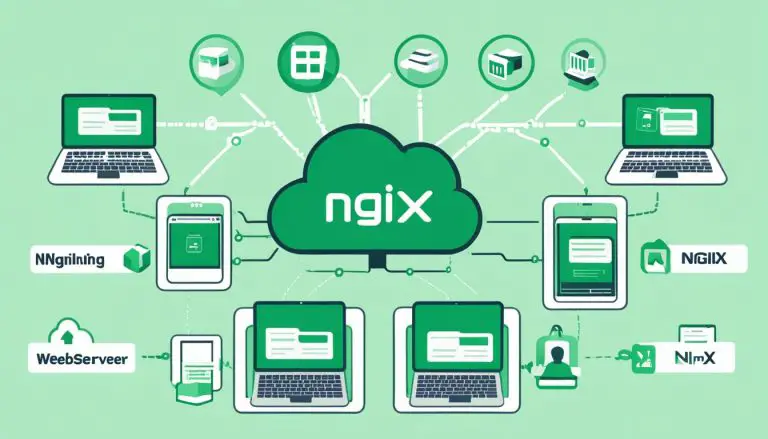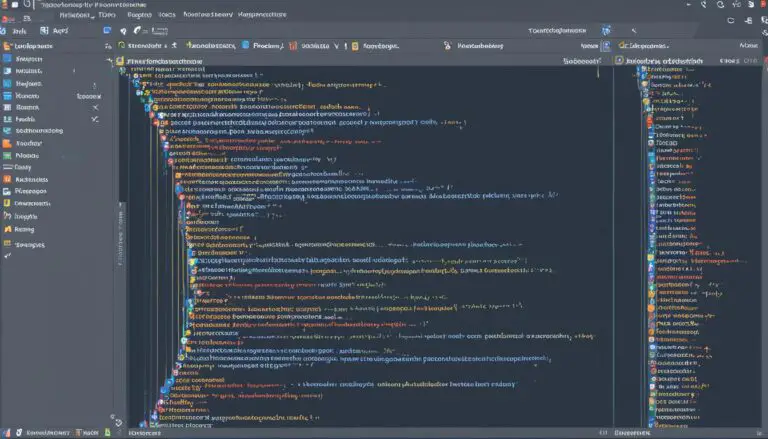Debian vs Arch Linux: A User’s Experience Comparison
In this article, I will compare the user experience of Debian and Arch Linux, two popular Linux distributions. Whether you are a beginner or an advanced user, this comparison will provide valuable insights into the strengths and weaknesses of these distributions, helping you make an informed decision.
Key Takeaways:
- Debian and Arch Linux are two popular Linux distributions known for their distinct user experiences.
- Debian prioritizes stability and reliability, making it an excellent choice for users who value a more conservative approach to software updates and system maintenance.
- Arch Linux, on the other hand, offers a cutting-edge experience, providing users with the latest software updates and a more customizable environment.
- Both distributions have active communities that provide support and valuable documentation.
- Consider your needs for stability, customization, and community support when choosing between Debian and Arch Linux.
Exploring the World of Linux: The Prominence of Distributions
Linux is a dominant force in the world of operating systems, with over 96% of the world’s top 1 million servers running on Linux. Its open-source nature and robust functionality make it an attractive choice for both novices and professionals alike. One of the key factors contributing to the wide adoption of Linux is the diverse range of Linux distributions available in the market.
Linux Distributions:
Linux distributions are variations of the Linux operating system that have been tailored to suit different user needs and preferences. Each distribution comes with a specific set of applications, desktop environments, and package managers, providing users with a unique experience. Whether you are looking for a beginner-friendly distribution or a cutting-edge platform for professionals, there is a Linux distribution that caters to your requirements.
The abundance of Linux distributions allows users to choose the one that best aligns with their goals and expertise. Novices can opt for user-friendly distributions such as Ubuntu or Linux Mint, which provide a familiar interface and comprehensive documentation to facilitate a smooth learning curve. Professionals, on the other hand, may prefer distributions like Fedora or openSUSE, which offer advanced customization options and robust support for enterprise-grade applications.
A Vast Playground for Innovation:
The availability of multiple distributions fosters innovation within the Linux community. Developers constantly strive to enhance existing distributions or create new ones to address specific use cases or market niches. This vibrant ecosystem results in the constant evolution and enhancement of Linux distributions, providing users with a wealth of options to explore.
In the upcoming sections, we will delve into a comparison between two prominent Linux distributions, Debian and Arch Linux. We will examine various aspects such as stability, customization, community support, and security to help you make an informed choice. Whether you are a novice or a seasoned professional, understanding the differences between these distributions can empower you to select the one that best suits your needs.
Debian vs Arch Linux: The Philosophies of Stability vs Cutting Edge
Debian Linux and Arch Linux are two popular Linux distributions that embody contrasting philosophies when it comes to stability and cutting-edge software. While both distributions offer unique benefits, they cater to different types of users with varying priorities.
Legacy of Debian: The Pursuit of Stability and Reliability
Debian has a long-standing reputation for prioritizing stability and reliability. It is renowned for its meticulous testing and release process, ensuring that software updates are thoroughly vetted before being made available to users. This emphasis on stability makes Debian an ideal choice for users who value a robust and secure system.
Debian’s commitment to stability is reflected in its release cycles. The distribution follows a “release when ready” approach, whereby each new version is thoroughly tested and polished to meet the high standards set by the developers and the community. This method ensures that users can rely on Debian for long-term stability and dependable performance.
Furthermore, Debian’s extensive package repositories contain a vast selection of software that has undergone rigorous testing, guaranteeing compatibility and reliability. This attention to detail and commitment to stability have contributed to Debian’s reputation as a rock-solid distribution widely used in server environments and critical systems.
Arch Linux Ethos: The Cutting-Edge Trailblazer
Arch Linux, on the other hand, takes a different approach, positioning itself as a cutting-edge distribution for users seeking the latest software and features. Arch Linux follows a rolling release model, meaning that users receive continuous updates and access to the latest software as soon as it becomes available.
This cutting-edge philosophy is reflected in Arch Linux’s minimal installation process, which encourages users to build and customize their systems based on their unique needs and preferences. Arch Linux users are often more technically inclined and enjoy the freedom and flexibility afforded by the distribution’s “do-it-yourself” ethos.
Arch Linux’s commitment to staying at the forefront of software development ensures that users can experience the latest features and advancements in the Linux ecosystem. This makes it particularly appealing to enthusiasts, developers, and those who enjoy exploring and experimenting with the latest technologies.
Setting Up: Installation Processes Compared
The installation process of a Linux distribution can vary significantly, and Debian and Arch Linux have their own unique installation processes. In this section, we will compare the installation processes of Debian and Arch Linux, exploring the steps involved and any differences in simplicity or customization options.
When it comes to installing Debian, the process is straightforward and user-friendly. You can choose between a graphical or text-based installer, depending on your preference and system requirements. The Debian installer provides a guided installation process, allowing you to easily select the desired options, such as partitioning, package selection, and user account setup.
On the other hand, Arch Linux takes a different approach to installation. It follows a minimalist philosophy, giving users complete control and flexibility over their system. The installation process involves manually configuring each aspect of the system, including partitioning, package selection, and even the installation of the desktop environment. This level of customization can be intimidating for beginners but offers unparalleled flexibility for advanced users.
To give you a visual representation of the installation processes, here is a comparison table:
| Debian | Arch Linux |
|---|---|
| Guided installation process | Manual configuration |
| User-friendly interface | Minimalist approach |
| Option to choose graphical or text-based installer | Text-based installer |
| Partitioning, package selection, and user account setup | Manual configuration for all aspects |
As you can see, the installation processes of Debian and Arch Linux offer distinct experiences. Debian provides a guided and user-friendly approach, while Arch Linux favors a more hands-on and customizable installation. Depending on your preferences and expertise, you can choose the distribution that aligns with your requirements.
Debian and Arch Linux User Interface: A Study in Contrasts
The user interface of a Linux distribution plays a crucial role in the overall user experience. When comparing Debian and Arch Linux, we find two distinct approaches that highlight their unique philosophies.
The Comfort of Debian’s User-Friendly Design
Debian prioritizes a user-friendly design that aims to provide a familiar environment and reduce the learning curve for newcomers. Its interface is intuitive and well-structured, making it easy for users to navigate and find the desired settings. Debian’s user interface is designed to be inclusive, ensuring that users from different backgrounds and skill levels can comfortably interact with the system.
With its emphasis on stability and reliability, Debian focuses on offering a consistent and user-friendly experience. The interface is thoughtfully designed to provide a seamless workflow, enabling users to perform tasks efficiently and effectively. Whether you are a novice or an experienced user, Debian’s user-friendly design ensures a comfortable and accessible computing experience.
Arch Linux’s Minimalist Approach and Its DIY Aesthetic
Arch Linux, in contrast, embraces a minimalist approach that encourages users to build their own customized environment. The user interface is intentionally kept barebones, allowing users to choose their desired desktop environment, window manager, and other components according to their preferences. This minimalist approach gives users the flexibility to create a personalized system that aligns with their specific needs and aesthetic preferences.
Arch Linux’s DIY (Do-It-Yourself) aesthetic empowers users to shape their computing experience from the ground up. By providing a solid foundation and minimal default configurations, Arch Linux allows users to take full control over their system and customize it to their liking. This level of customization fosters a sense of ownership and pride among Arch Linux users, who enjoy the freedom to craft a unique and tailor-made user interface.
Package Management in Debian and Arch Linux
Package management is a vital aspect of any Linux distribution, allowing users to install, update, and remove software efficiently. In this section, I will compare the package management systems of Debian and Arch Linux, exploring the tools and repositories used, as well as any differences in ease of use or availability of software packages.
Debian: Debian utilizes the Advanced Package Tool (APT) as its primary package management system. APT is known for its stability and robustness, making it a favored choice for users who prioritize reliability. Debian maintains a vast repository of software packages, offering a wide range of applications and libraries to users.
Arch Linux: Arch Linux adopts a different approach to package management, utilizing the Pacman package manager. Pacman is known for its simplicity and speed, offering users a lightweight and efficient package management experience. Arch Linux’s package repository, known as the Arch User Repository (AUR), provides a vast collection of community-maintained packages.
In terms of ease of use, Debian’s APT provides a straightforward command-line interface and user-friendly package management tools, such as apt-get and aptitude. Arch Linux’s Pacman also offers a simple command-line interface, focusing on minimalist yet effective package management.
Debian and Arch Linux each offer unique package management systems tailored to their respective philosophies. Debian excels in stability and reliability, while Arch Linux emphasizes simplicity and speed. Both distributions provide extensive repositories, ensuring a comprehensive range of software options for their users.
To summarize:
| Aspect | Debian | Arch Linux |
|---|---|---|
| Package Management System | Advanced Package Tool (APT) | Pacman |
| Primary Repository | Debian Repository | Arch User Repository (AUR) |
| Usability | Straightforward and user-friendly | Minimalist and efficient |
By comparing the package management systems of Debian and Arch Linux, users can evaluate which distribution aligns better with their preferences and requirements.
Performance Benchmarks: Speed and Efficiency in Debian vs Arch Linux
When choosing a Linux distribution, performance is a crucial factor to consider. In this section, we will analyze the speed and efficiency of Debian and Arch Linux, comparing their performance benchmarks and examining the system requirements and resource utilization.
System Requirements and Utilization
Before diving into performance benchmarks, let’s take a look at the system requirements and utilization of Debian and Arch Linux. Both distributions have different demands in terms of hardware resources, and understanding these requirements is essential to ensure smooth operation.
Performance: A Real-World Look at Debian and Arch
Now, let’s dive deeper into the performance of Debian and Arch Linux. By conducting real-world tests, we can gain insights into the actual speed and efficiency of these distributions. Factors such as boot time, responsiveness, and resource management will be examined to provide a comprehensive understanding of their performance.
Stay tuned as we reveal the performance benchmarks and examine how Debian and Arch Linux stack up against each other in terms of speed and efficiency.
Customization Possibilities: Architecting Your Experience
One of the primary advantages of Linux is its customization options. Linux distributions like Debian and Arch Linux offer a plethora of possibilities to tailor your operating system to your specific needs and preferences. With the ability to choose desktop environments, themes, and other personalization options, you have full control over the look and feel of your Linux experience.
Whether you prefer a sleek and minimalist interface or a feature-rich desktop environment, Debian and Arch Linux provide ample choices to cater to your preferences. You can customize every aspect of your system, from the visual appearance to the behavior and functionality.
Community and Documentation: A Tale of Two Supports
Debian’s Vast and Historical Community Support
Debian, being one of the oldest and most respected Linux distributions, boasts a vast and historical community support network. The Debian community is known for its inclusivity and dedication to helping users of all levels of expertise. Whether you are a seasoned Linux user or a newcomer to the world of open-source software, you can always rely on Debian’s community members to provide support and guidance.
The Debian community support consists of forums, mailing lists, chat rooms, and various online resources where users can seek assistance, share knowledge, and collaborate with fellow enthusiasts. The strong bond that exists within the Debian community creates a welcoming and collaborative environment that fosters a sense of belonging and mutual respect.
Information Trove: Navigating Arch Wiki and User Forums
Arch Linux is known for its extensive documentation, primarily maintained through the Arch Wiki. The Arch Wiki is a comprehensive resource that covers a wide array of topics related to Arch Linux installation, configuration, package management, and troubleshooting. It provides users with detailed step-by-step guides, tips, and tricks to get the most out of their Arch Linux experience.
In addition to the Arch Wiki, the Arch Linux community is active and supportive through user forums and IRC channels. Users can ask questions, offer help, and share their knowledge with others, creating a vibrant community-driven ecosystem. The Arch Linux community values self-sufficiency and encourages users to explore and learn, fostering a culture of continuous improvement and growth.

Debian vs Arch Linux: Security Measures and Protocols
Security is a vital priority for any operating system, and both Debian and Arch Linux take extensive measures to ensure the safety of users’ data and systems. In this section, we will compare the security measures and protocols employed by these two popular Linux distributions, providing valuable insights for users seeking a secure computing environment.
One of the fundamental aspects of security is the regular patching of vulnerabilities. Both Debian and Arch Linux have dedicated security teams that actively monitor and address vulnerabilities in their respective distributions. Debian has a well-established security process, with a team that meticulously tracks and releases security updates for all supported versions. These updates are then made available through the Debian security repositories, ensuring that users can easily access and apply the necessary patches to safeguard their systems.
Arch Linux, on the other hand, follows a rolling release model, whereby updates are provided frequently to ensure the availability of the latest software and security fixes. The Arch Security Team is responsible for promptly addressing vulnerabilities and releasing updated packages through the Arch Linux package manager, known as Pacman. This enables users to benefit from timely security updates and mitigations.
Both distributions also prioritize the robustness of their default configurations to enhance security. Debian focuses on providing a secure and locked-down system right out of the box, with default configurations that minimize potential vulnerabilities. Arch Linux, being a highly customizable distribution, allows users to customize their security measures to suit their individual needs, striking a balance between flexibility and sanity.
Additionally, Debian and Arch Linux support various security protocols to protect user data and communications. They both offer support for SELinux (Security-Enhanced Linux) and AppArmor, which provide mandatory access controls and confinement for applications, limiting their privileges and reducing the risk of malicious activities.
In conclusion, both Debian and Arch Linux prioritize the security of users’ data and systems, implementing robust security measures, timely vulnerability patching, and support for security protocols. The choice between the two distributions ultimately depends on individual preferences and requirements, be it a preference for a stable and secure system (Debian) or a cutting-edge environment with customizable security configurations (Arch Linux).
Conclusion
In conclusion, our comparison between Debian and Arch Linux has highlighted the key strengths and weaknesses of each distribution. Debian excels in stability and reliability, making it a preferred choice for users who prioritize a robust and secure system. On the other hand, Arch Linux offers a cutting-edge experience, always providing the latest software and features for users who crave innovation.
When deciding between Debian and Arch Linux, it is essential to consider your specific needs. If stability and ease of use are your primary concerns, Debian provides a user-friendly design and extensive community support that ensures a smooth experience. However, if you are an advanced user or enjoy a more hands-on approach to Linux, Arch Linux’s minimalist aesthetic and DIY ethos may be the perfect fit.
Furthermore, customization options play a significant role in the selection process. Debian offers a range of customization possibilities, allowing users to tailor their operating system to their liking. Arch Linux takes customization to the next level, encouraging users to architect their entire experience by choosing their preferred desktop environments, themes, and other personalization options.
In terms of community support and documentation, Debian boasts a vast and historical community that provides valuable guidance and assistance. Arch Linux, on the other hand, offers an extensive information trove through the Arch Wiki and user forums, giving users access to a wealth of knowledge and troubleshooting resources.
In conclusion, whether you value stability, cutting-edge software, customization, or community support, both Debian and Arch Linux have their unique offerings. By considering the factors discussed in this comparison, you can confidently choose the Linux distribution that aligns with your preferences and requirements.
FAQ
What are the key differences between Debian and Arch Linux?
Debian prioritizes stability and reliability, while Arch Linux focuses on being a cutting-edge distribution with the latest software and features.
Which Linux distribution is more user-friendly, Debian or Arch Linux?
Debian provides a user-friendly design that reduces the learning curve for newcomers, while Arch Linux embraces a minimalist approach and encourages users to build their own customized environment.
How do the package management systems of Debian and Arch Linux compare?
Debian and Arch Linux have different tools and repositories for package management, and there may be differences in ease of use and availability of software packages.
What are the performance benchmarks of Debian and Arch Linux?
System requirements and resource utilization vary between Debian and Arch Linux, and real-world factors such as boot time and responsiveness may also differ.
Can I customize the look and feel of Debian and Arch Linux?
Both Debian and Arch Linux offer customization options, allowing users to choose desktop environments, themes, and other personalization settings.
What is the level of community support and documentation available for Debian and Arch Linux?
Debian has a vast and historical community support, while Arch Linux offers extensive information through the Arch Wiki and user forums.
What security measures and protocols are implemented in Debian and Arch Linux?
Debian and Arch Linux take various security measures to ensure the safety of users’ data and systems, including vulnerability patching and robust default configurations.
- About the Author
- Latest Posts
Mark is a senior content editor at Text-Center.com and has more than 20 years of experience with linux and windows operating systems. He also writes for Biteno.com





